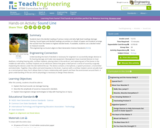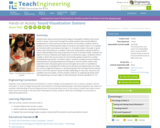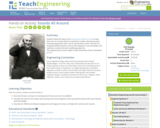
- Subject:
- Psychology
- Material Type:
- Unit of Study
- Provider:
- Rice University
- Provider Set:
- OpenStax College


By the end of this section, you will be able to:
Describe the basic anatomy and function of the auditory system
Explain how we encode and perceive pitch
Discuss how we localize sound

Students learn the decibel reading of various noises and why high-level readings damage hearing. Sound types and decibel readings are written on sheets of paper, and students arrange the sounds from the lowest to highest decibel levels. If available, a decibel meter can be used to measure sounds by students.

Students learn about sound and sound energy as they gather evidence that sound travels in waves. Teams work through five activity stations that provide different perspectives on how sound can be seen and felt. At one station, students observe oobleck (a shear-thickening fluid made of cornstarch and water) “dance” on a speaker as it interacts with sound waves (see Figure 1). At another station, the water or grain inside a petri dish placed on a speaker moves and make patterns, giving students a visual understanding of the wave properties of sound. At another station, students use objects of various materials and shapes (such as Styrofoam, paper, cardboard, foil) to amplify or distort the sound output of a homemade speaker (made from another TeachEngineering activity). At another station, students complete practice problems, drawing waves of varying amplitude and frequency. And at another station, they experiment with string (and guitar wire and stringed instruments, if available) to investigate how string tightness influences the plucked sound generated, and relate this sound to high/low frequency. A worksheet guides them through the five stations. Some or all of the stations may be included, depending on class size, resources and available instructors/aides, and this activity is ideal for an engineering family event.

Students follow the steps of the engineering design process to create their own ear trumpet devices (used before modern-day hearing aids), including testing them with a set of reproducible sounds. They learn to recognize different pitches, and see how engineers must test designs and materials to achieve the best amplifying properties.

To understand how hearing works, Douglas L. Oliver follows a sound on its journey into the ear. [5:17]